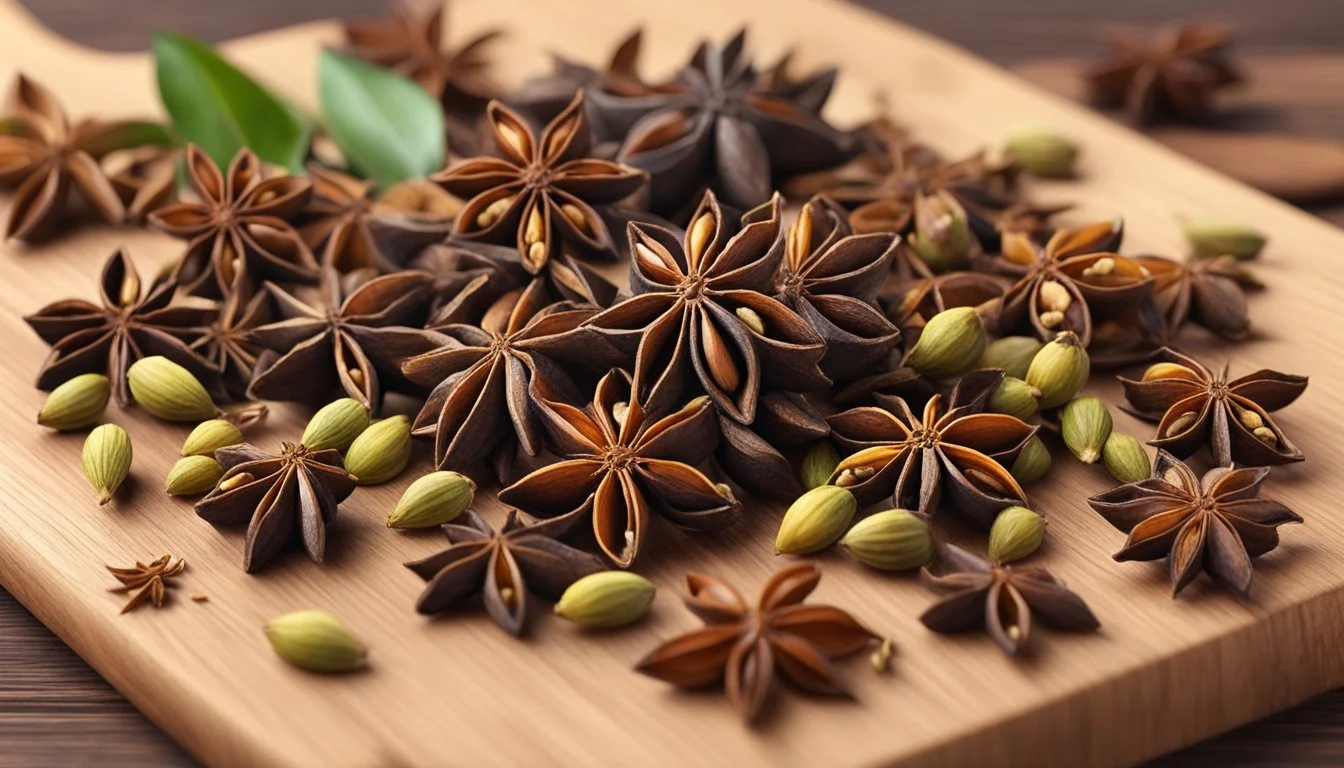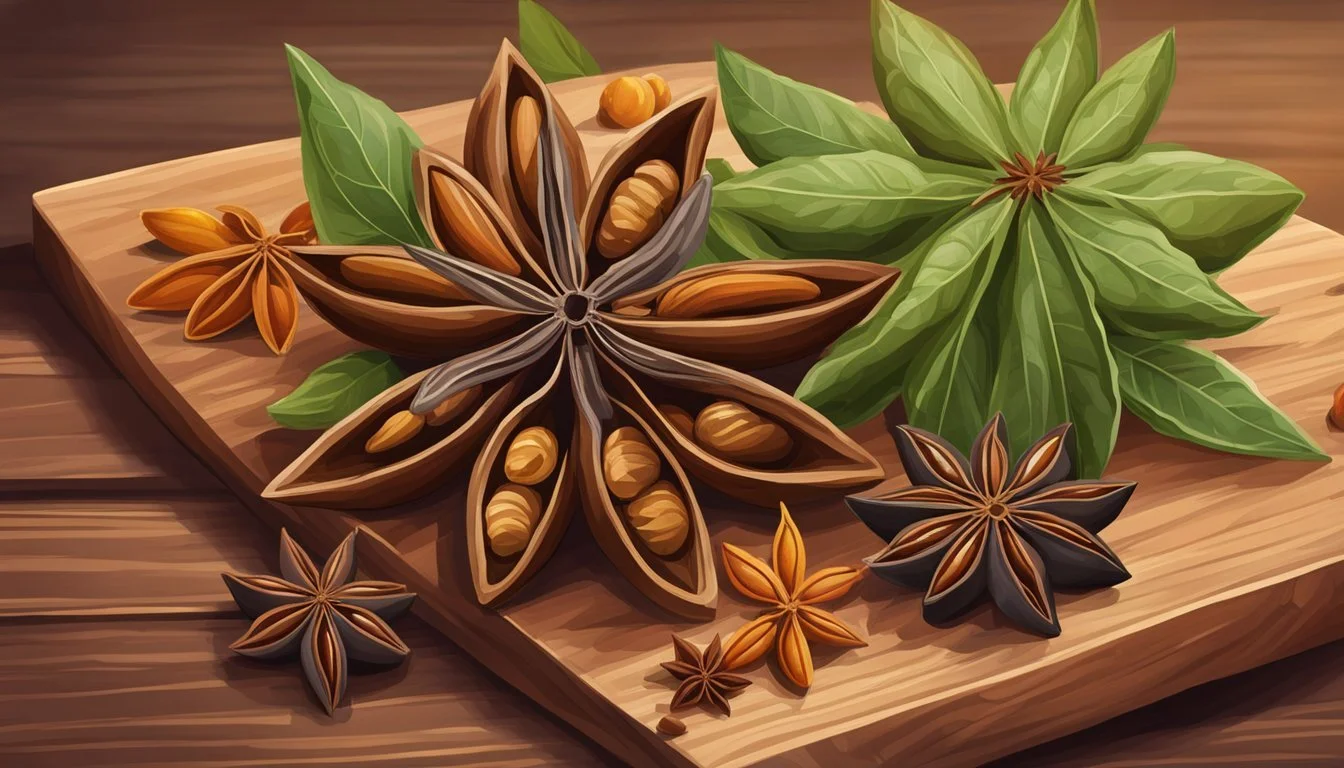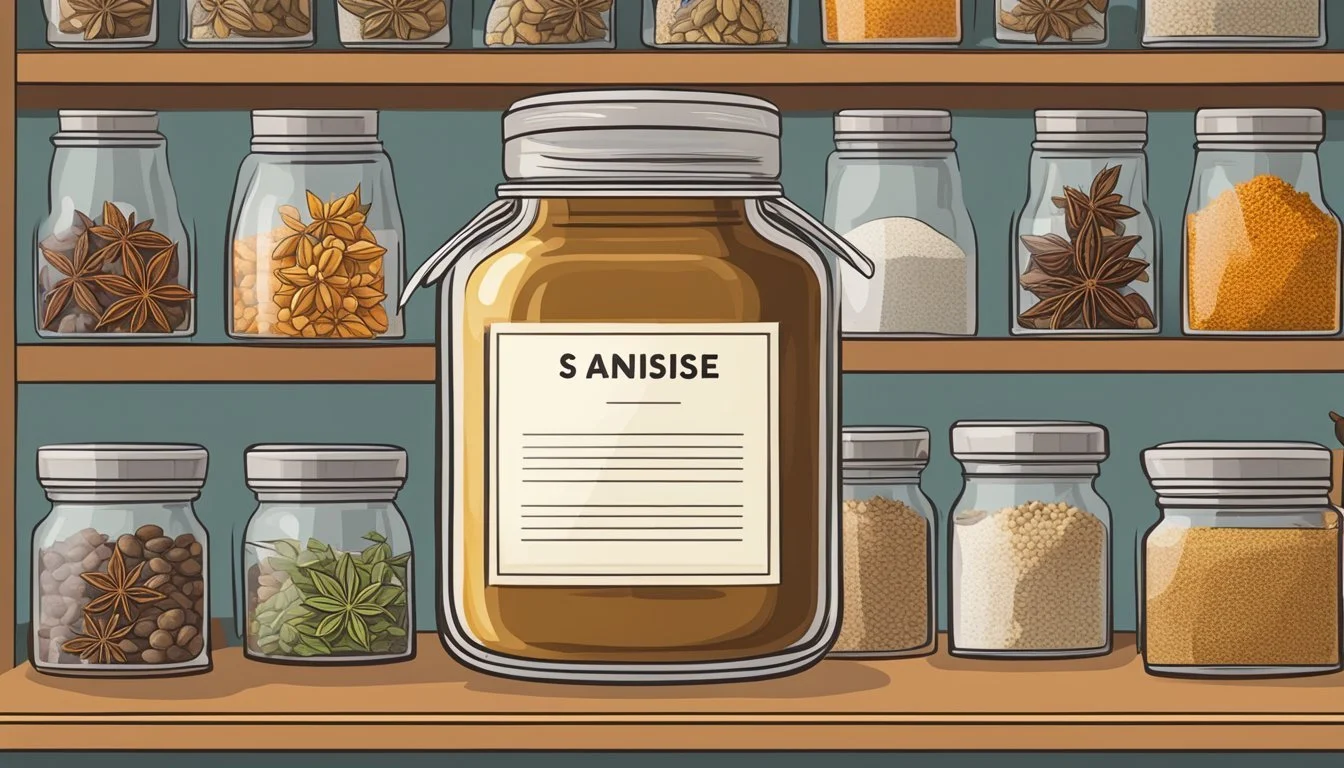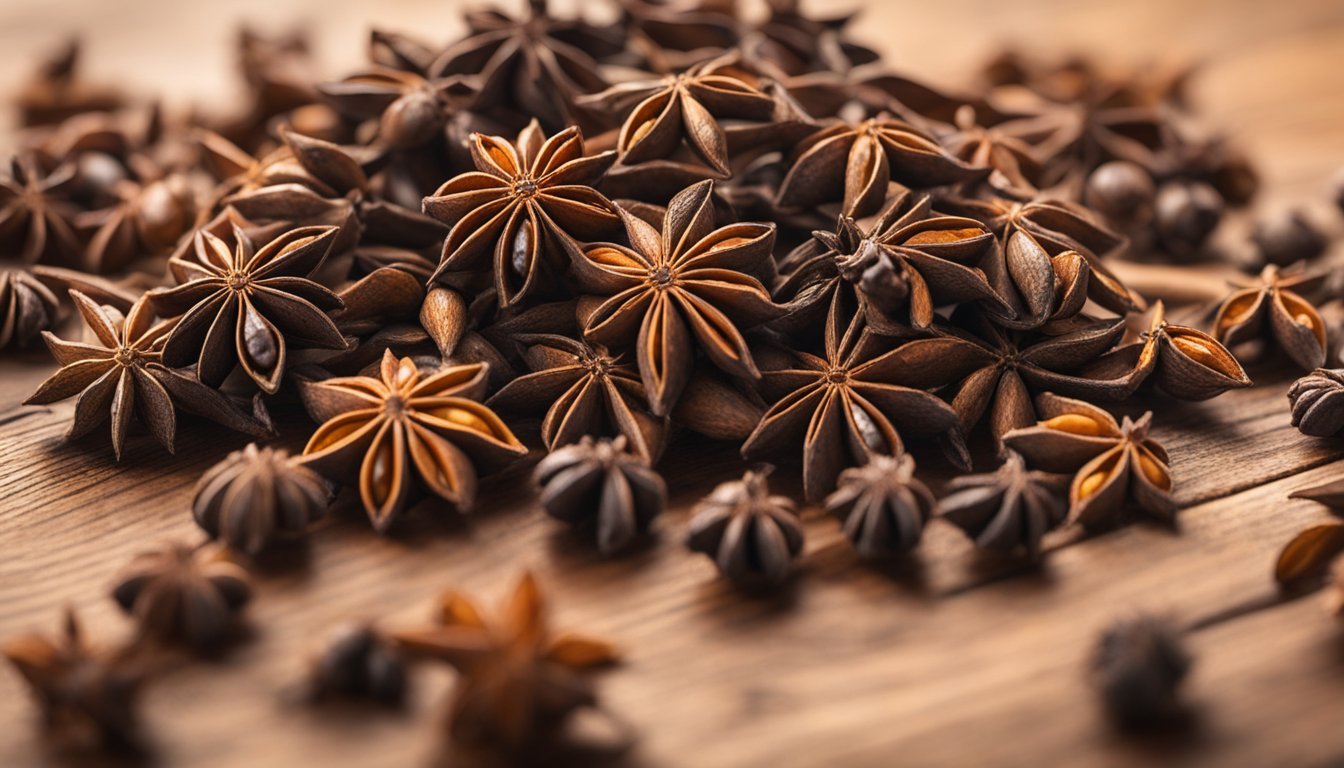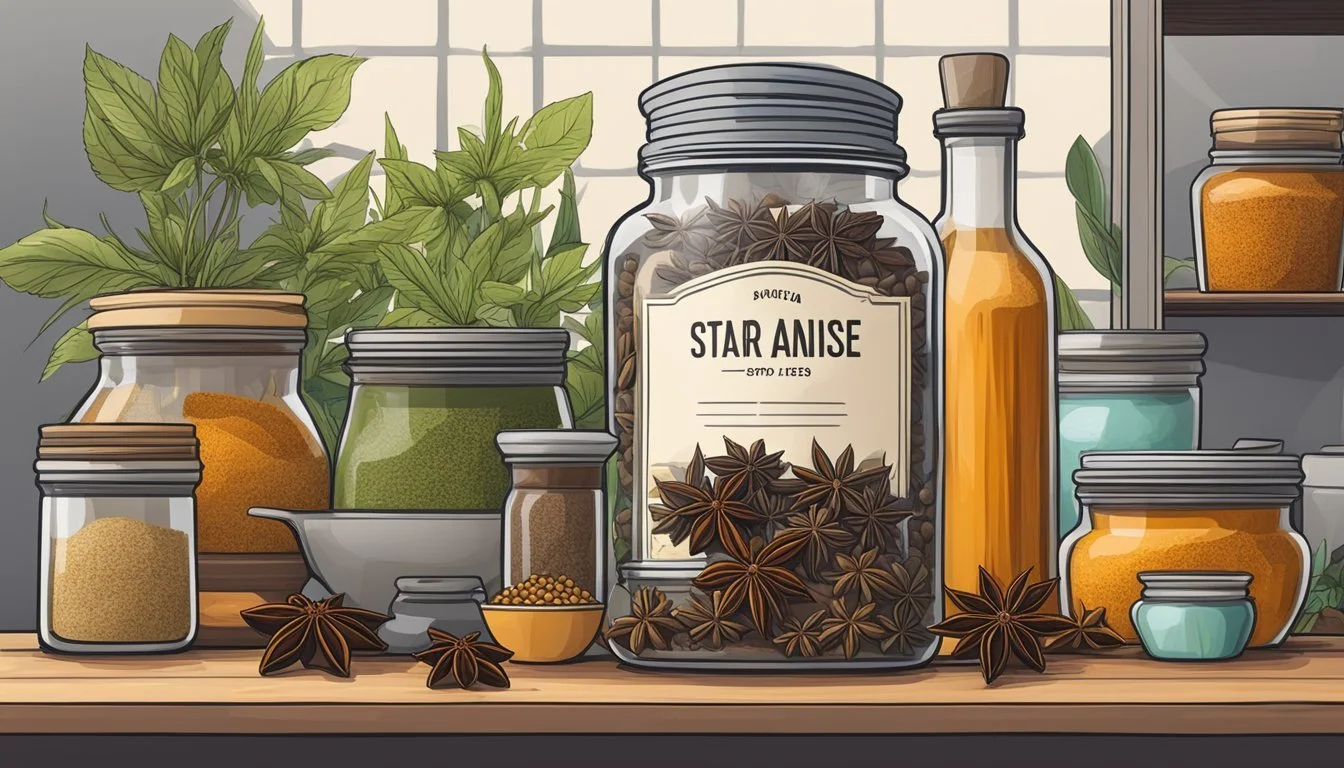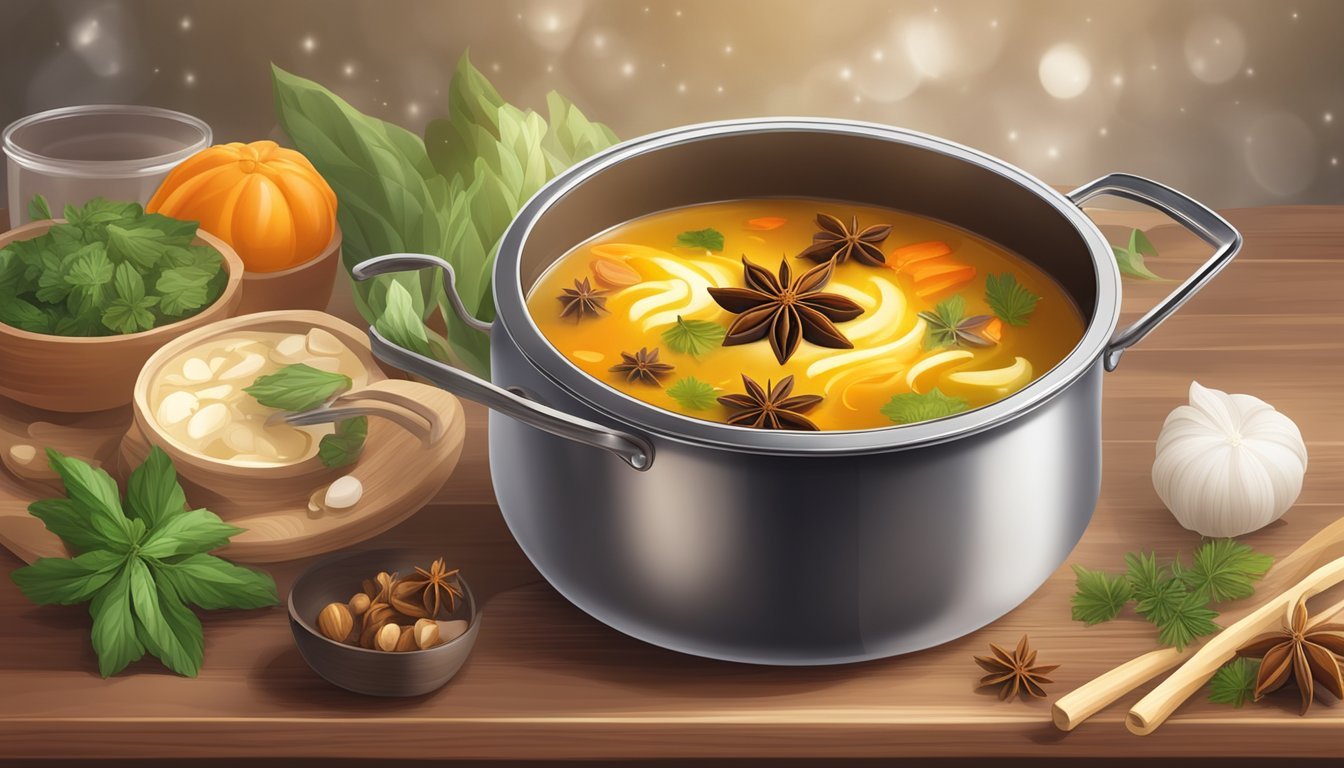Does Star Anise Go Bad?
Shelf Life and Storage Tips
Star anise, a star-shaped spice known for its distinct licorice-like flavor, is a staple in many kitchens. Yes, star anise can go bad. While it lasts for an extended period if stored properly, over time it loses its flavor, aroma, and potency. The essential oils responsible for its unique taste gradually evaporate, rendering the spice less effective in culinary applications.
Proper storage is key to maintaining the quality of star anise. It should be kept in an airtight container, away from direct sunlight and moisture, to preserve its fresh and robust flavor for as long as possible. Adding this spice to dishes enhances their complexity, especially in recipes involving pork, duck, and various broths.
Understanding the shelf life and storage requirements of star anise ensures that one can take full advantage of its culinary and medicinal benefits. Knowing how to store it correctly not only saves money but also enriches the flavors of countless dishes, making each meal more enjoyable.
Understanding Star Anise
Star anise, scientifically known as Illicium verum, is valued for its distinctive flavor and various culinary applications. Originating from Asia, particularly Vietnam and China, this spice is essential in both sweet and savory dishes.
Botanical Profile
Star anise comes from the fruit of an evergreen tree native to China and Vietnam. The tree is characterized by its woody, star-shaped fruits that contain seeds within each point or pod. These fruits are typically harvested just before they ripen. The spice is visually striking, with eight-pointed stars that retain a dark brown hue. The primary component responsible for its characteristic flavor is anethole, also found in anise seeds. This similarity has led to some confusion between the two, but they are distinct plants.
Culinary Uses
Star anise is versatile in the kitchen, used both in whole form and ground. Whole pods are often added to liquids like broths, soups, and stews, where they infuse a rich, licorice-like flavor. It is also a key ingredient in five-spice powder, commonly used in Chinese cuisine. Ground star anise can enhance baked goods, offering a warm, aromatic undertone. This spice is also popular in mulled wine and spiced tea, where it complements other spices beautifully.
Flavor Profile
The flavor of star anise is intense and reminiscent of licorice, although it is sweeter and more aromatic. It imparts a warm, sweet, and slightly spicy taste to dishes. Unlike the more subtle flavor of anise seeds, star anise is more potent and should be used sparingly to avoid overpowering other ingredients. Its unique flavor profile makes it a staple in both Asian culinary traditions and Western holiday baking, offering a depth that enhances the complexity of various recipes.
Understanding the origins, culinary applications, and flavor profile of star anise can greatly enhance its use in the kitchen. Proper storage, such as keeping the spice in an airtight container away from light and moisture, ensures it remains fresh and lasts up to several years.
Storage Tips for Longevity
Storing star anise properly ensures it remains fresh and effective for the longest period. Key factors include preventing exposure to moisture and sunlight and using airtight containers.
Proper Storage Conditions
Star anise should always be stored in an airtight container. This prevents moisture from getting in, which can lead to mold or bacterial growth. It's crucial to place the container in a dry place away from direct sunlight.
Keeping star anise in a pantry is often ideal as it stays at a consistent cool temperature. Avoid areas prone to heat fluctuations, such as near stoves or ovens. Additionally, store it away from strong-smelling substances to prevent it from absorbing unwanted odors.
Shelf Life
If stored correctly, whole star anise can remain fresh for about a year. After this time, the spice may start to lose its potent flavor and aroma. Ground star anise has a shorter shelf life, usually around six months.
Monitoring the storage conditions and rotating the stock to use the oldest first ensures optimal usage. Always check expiration dates if commercially packaged, but rely on sensory checks for bulk purchases.
Signs of Aging
Several signs indicate that star anise is aging. One primary indicator is a decrease in its pungency. Fresh star anise has a strong, distinctive smell, and as it ages, this aroma fades.
Another sign is the condition of the stars. Fresh star anise typically has whole, unbroken stars. Over time, they may become brittle and break apart more easily. Also, be vigilant for pests like pantry moths, as these can indicate that the star anise is no longer suitable for use.
By following these storage tips, star anise can be kept fresh and flavorful for as long as possible. Proper care not only extends its shelf life but also maintains its culinary quality.
Detecting Spoilage
Detecting spoilage in star anise involves examining its appearance, smell, and texture. Identifying these signs early ensures you maintain the quality and freshness of your spices.
Visual Indicators
Visual inspection is the first step in detecting spoilage. Look for any signs of mold or discoloration on the star anise pods. Mold appears as fuzzy or powdery spots, typically white, green, or black. This indicates bacterial or fungal growth, making the spice unsafe to use.
Check the structural integrity of the pods. Fresh star anise features unbroken, star-shaped pods with a rich brown hue. If the pods are cracked, broken, or faded in color, they may have lost their potency. Presence of pests, such as weevils or pantry moths, can also indicate spoilage.
Olfactory Clues
Smell is a reliable indicator of the quality and freshness of star anise. Fresh star anise exudes a strong, licorice-like aroma. When the scent diminishes or smells off, it suggests a decline in quality. Spoiled star anise may emit a musty, sour, or otherwise unpleasant odor.
Stale or faint-smelling star anise indicates that the essential oils, responsible for its pungent aroma, have degraded. A significant change in smell points towards possible bacterial growth or contamination, rendering the spice unusable.
Texture Changes
Texture changes are subtle but crucial in spotting spoilage. Fresh star anise pods should feel dry yet firm to the touch. If the pods become soft, damp, or sticky, this indicates moisture exposure, which can lead to mold and bacterial growth.
Brittle and overly dry pods suggest prolonged storage, affecting the flavor quality. When handling star anise, check for any unusual textures; they should not crumble easily nor feel excessively hard. Properly stored in a sealed, moisture-proof container will help preserve the texture.
Culinary Applications
Star anise is a versatile spice used in numerous cuisines around the world. It enhances the flavor profile of both sweet and savory dishes, making it a favorite in both traditional and modern recipes.
Traditional Recipes
Star anise is prominently featured in traditional Chinese and Vietnamese cuisine. In Chinese cooking, it is a key ingredient in five-spice powder, which also includes cloves, Chinese cinnamon, Sichuan pepper, and fennel seeds.
Pho, a popular Vietnamese soup, gets its distinctive flavor partly from star anise. This spice also features in various Vietnamese main dishes and broths, adding depth and complexity to the flavor. Braised meats and stews benefit from star anise, which provides a sweet, licorice-like hint that enhances the richness of the dishes.
Modern Cuisine
In modern cuisine, star anise finds its way into experimental and fusion dishes. Chefs use it to create unique marinades for meats, blending it with soy sauce, ginger, and garlic for an aromatic and flavorful result.
Star anise also appears in desserts and baked goods, where it adds an exotic twist to cookies, cakes, and custards. Its savvy use in desserts underscores its versatility beyond traditional Asian dishes. Star anise can infuse syrups and sauces for a sophisticated finish, elevating everyday recipes to restaurant-quality dishes.
Alternative Uses
Beyond its primary role in cooking, star anise has alternative culinary uses. It can be used to flavor various beverages such as mulled wine and teas. When combined with cinnamon and cloves, star anise creates a warming blend that’s perfect for winter drinks.
The spice may also be used to infuse oils and vinegars, providing a subtle yet flavorful note to salad dressings and dipping sauces. Star anise’s strong aromatic properties make it valuable in making homemade spice blends tailored to personal taste, ensuring a custom flavor profile for any dish.
Health Benefits and Considerations
Star anise is valued for its numerous medicinal properties, as well as its culinary uses. It contains several key compounds that contribute to its health benefits, and there are some considerations to keep in mind when using it.
Nutritional Properties
Star anise is rich in antioxidants owing to its high polyphenol content. These antioxidants help to combat oxidative stress and may reduce the risk of chronic diseases.
Additionally, it is a good source of essential nutrients such as vitamins A and C. These vitamins play crucial roles in maintaining skin health and boosting the immune system. Minerals like iron and calcium found in star anise also contribute to overall well-being.
The bioactive compounds in star anise, including flavonoids and terpenoids, add to its nutritional profile, offering various health-promoting benefits.
Medical Uses
One of the notable medical uses of star anise is as an antiviral agent. It contains shikimic acid, a precursor in the pharmaceutical production of Tamiflu, an antiviral drug used to treat influenza.
Star anise has also shown antibacterial properties, making it effective against certain bacterial strains. Its essential oil has been studied for its potential to combat infections caused by bacteria and viruses.
Besides, star anise is believed to support respiratory health and digestion. Herbalists often use it to soothe coughs and improve digestion due to its carminative properties.
Precautions
Despite its benefits, star anise should be used cautiously. It is important to distinguish between Chinese star anise, which is generally safe for consumption, and Japanese star anise, which is toxic.
Consumption of large amounts can lead to side effects such as nausea and seizures. Pregnant and breastfeeding women should avoid excessive intake due to a lack of safety data.
Star anise may interact with certain medications, so individuals on medication should consult healthcare providers before using it. Ensuring the source of star anise is pure and properly identified is crucial to avoid adverse effects.
Purchasing and Substitutes
When buying star anise, it is important to consider factors that affect its flavor quality and longevity. Additionally, knowing about substitutes can be very handy if you run out or need alternatives for specific recipes.
Buying Guidelines
Star anise can be purchased either whole or ground. Whole star anise tends to retain its flavor longer compared to ground star anise. It is often found in spice sections of grocery stores. When selecting whole star anise, look for pods that are intact, with a dark brown color and a strong, characteristic aroma.
Ground star anise should be bought in smaller quantities, as it loses its potency faster. Always check the expiration date and prefer purchasing from reputable sources to ensure fresh stock. Proper storage is crucial; keep star anise in airtight containers away from light and moisture to preserve its flavor.
Star Anise Substitutes
If you need a star anise substitute, several options can mimic its sweet and licorice-like flavor. Anise seeds are a popular choice; they offer a similar taste and can be found in many grocery stores. Use approximately the same amount of anise seeds as you would star anise.
Fennel seeds are another alternative, derived from the Foeniculum vulgare plant. They offer a slightly milder flavor but can work well in many recipes. Chinese five-spice powder also contains star anise as an ingredient and can serve as a suitable substitute, though it will add additional flavors.
Other options include cloves and anise extract, each providing varying degrees of sweetness and spice. Adjust quantities to taste, as these substitutes can vary in intensity.
Integrating Star Anise in Daily Cooking
Cooking with star anise offers a unique, licorice-like flavor that enhances a variety of dishes. It pairs well with sweet and savory meals, including meats and broths, and can add a rich aroma to your kitchen.
Easy-to-Implement Tips
Toasting: Lightly toast whole star anise pods in a dry pan until fragrant. This releases essential oils and amplifies their aroma and taste.
Infusing: Drop whole star anise pods into cooking liquids like stews, broths, or teas. Allow them to simmer to release their flavors, then remove before serving to avoid overpowering the dish.
Ground Star Anise: For a subtler flavor, sprinkle ground star anise directly into dishes such as rice, soups, or baked goods. Use sparingly to add a hint of licorice without overwhelming the other ingredients.
Storage: To maintain freshness, keep star anise in airtight containers away from light, moisture, or heat. This prevents mold and preserves its potent flavor.
Pairing with Other Ingredients
Meats: Star anise pairs excellently with fattier meats like pork, duck, and chicken. It enhances the richness of these proteins, adding depth to savory dishes.
Sweet Dishes: Its unique flavor complements sweet ingredients like cinnamon, cloves, and nutmeg. Use it in baking desserts such as cakes or cookies to introduce a warm, aromatic note.
Herbs and Spices: Combine with complementary herbs and spices like ginger, garlic, and bay leaves to create complex flavors in broths and stews.
Tea and Beverages: Infuse star anise in teas or mulled wine to provide an exotic twist, enhancing the drink's aroma and taste.
Pairing star anise with the right ingredients can transform everyday dishes into extraordinary culinary experiences.

